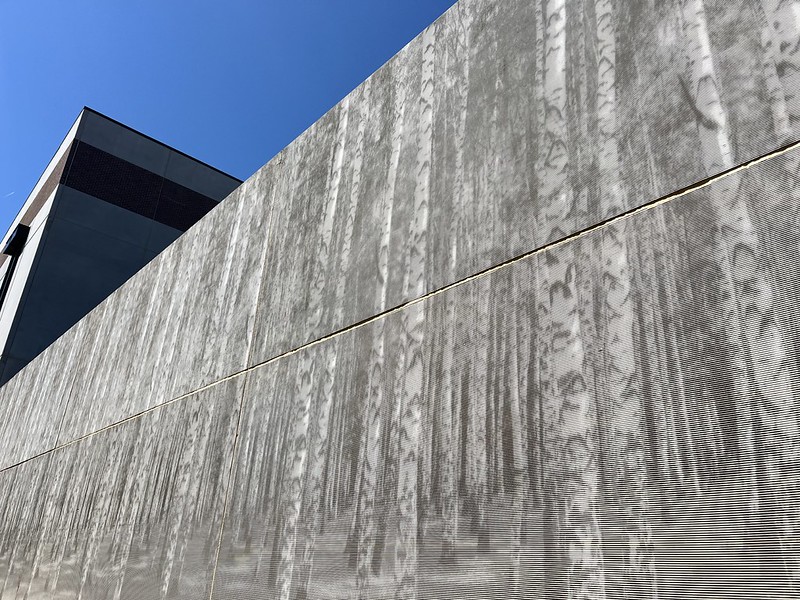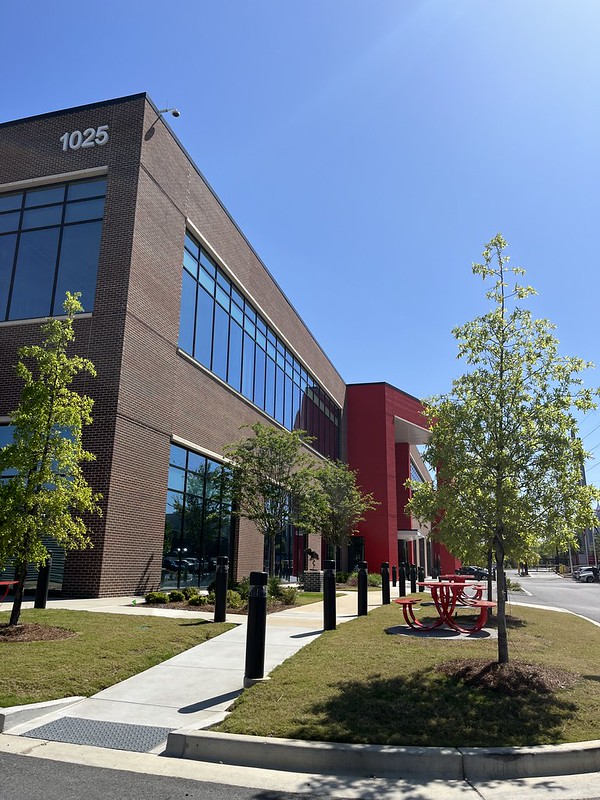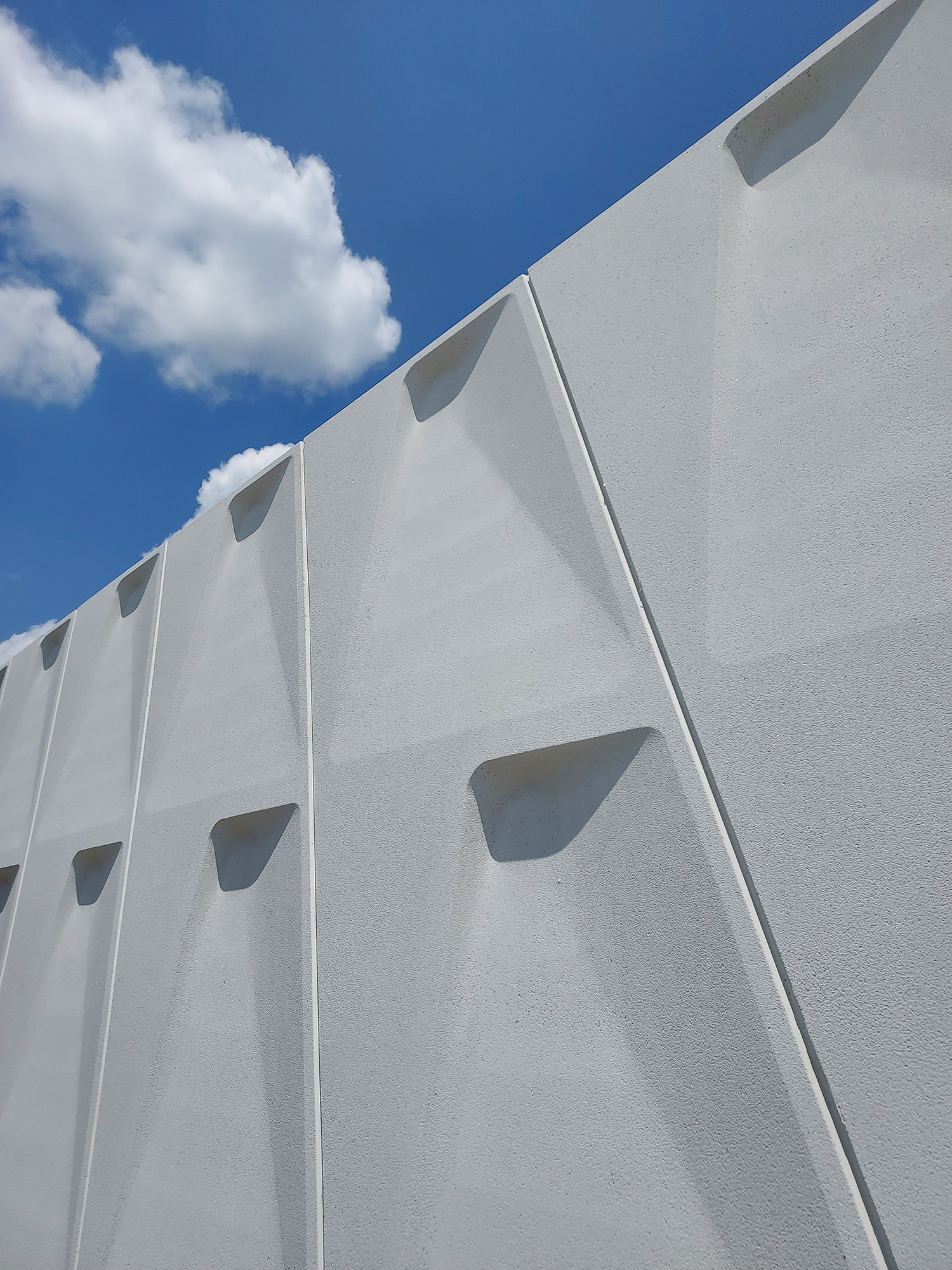
In an age dominated by cloud computing, artificial intelligence, and real-time analytics, the demand for robust digital infrastructure has skyrocketed. Data information facilities, once hidden, utilitarian bunkers of blinking lights and humming servers, are now emerging as architectural statements in their own right. A surprising hero in this architectural evolution? Concrete.
Architectural Polymers, LLC, has been ahead of the curve, participating in the design and form supply of these buildings for years. Since the beginning, the structures have adorned many types of exterior concrete claddings, including custom concrete art, photo-engraved, and thin brick form liner systems.
From Function to Form: The Changing Face of Data Facilities
Traditionally, data centers were nondescript, windowless boxes engineered for function, not form. But today, their growing visibility in urban and suburban landscapes is changing that. Tech companies, cloud service providers, and even governments are reimagining data centers as long-term infrastructure – permanent fixtures that deserve design consideration and community integration. These structures are also increasingly seen as symbols of the digital era – cathedrals of information. With that shift comes a responsibility (and opportunity) to reflect intention, innovation, and artistry in their built form.
The Role of Concrete: Brutalism Reimagined
Concrete is a natural choice for data centers for practical reasons. It provides superior thermal mass for temperature regulation, robust physical security, and resistance to fire, weather, and time. But beyond utility, concrete offers an unexpected creative canvas for architectural expression. We’re seeing a revival—though not a repetition—of Brutalist aesthetics. Clean lines, massive scale, and textured finishes are being explored with greater nuance. Where once poured slabs were smooth and unadorned, today’s concrete facades might be cast with intricate geometric patterns, layered textures, or abstract reliefs that catch light and shadow throughout the day.
Examples include:
- Form-liners used to imprint custom designs into precast panels
- Exposed aggregate surfaces that shimmer with local stone
- Board-formed concrete, evoking the craftsmanship of traditional building
- Digital fabrication techniques, allowing precise and artistic surface manipulation
These techniques allow concrete to act almost like a sculptural medium, adding dimension, narrative, and visual interest to otherwise closed, solid masses.
Architecture as Storytelling in the Age of Data
What message should a data facility convey? That depends on who’s building it. A public research institution might opt for an engraved facade referencing binary code or historical data motifs. A tech giant might favor sleek minimalism, reflecting computational efficiency and power. Others use concrete to connect to local history, incorporating regional stone, textures that echo local geology, or design motifs drawn from indigenous patterns.
Concrete allows this storytelling to be embedded, literally, into the walls of the building. And because these structures rarely have traditional windows or public entrances, the exterior is the face. It’s the only visible interface between the public and the enormous computational activity housed inside. That makes every opportunity for visual communication matter.
The Future: Data, Design, and Environmental Responsibility
As sustainability becomes essential in all facets of construction, concrete is evolving too. Advances in carbon-reducing additives, carbon-capture curing techniques, and recycled aggregates are making the material more eco-friendly. This opens the door for design that’s not just aesthetic, but ethically and environmentally aligned with the digital age it supports.
Data centers also often integrate green roofs, solar panel arrays, and water-cooling systems, all of which require thoughtful integration with the building’s exterior design. Concrete provides a flexible and durable foundation for these features.
Conclusion: Digital Fortresses as Public Art
The rise of data information facilities is an architectural frontier, one where utility meets creativity, and infrastructure becomes art. In a world increasingly shaped by invisible data flows, these buildings offer a rare tangible interface with the digital realm. Concrete, often underestimated as a “gray” or bland material, is proving to be a powerful medium for making these structures not just functional, but beautiful, meaningful, and enduring. As our digital future takes shape, we may find that its most iconic monuments are made not of glass and steel, but of thoughtful, expressive concrete.
Written by Nicole Miller Hackenberg Walters, former marketing director and an author and observer of modern design, architecture, and the evolving intersection of technology and the built environment.


